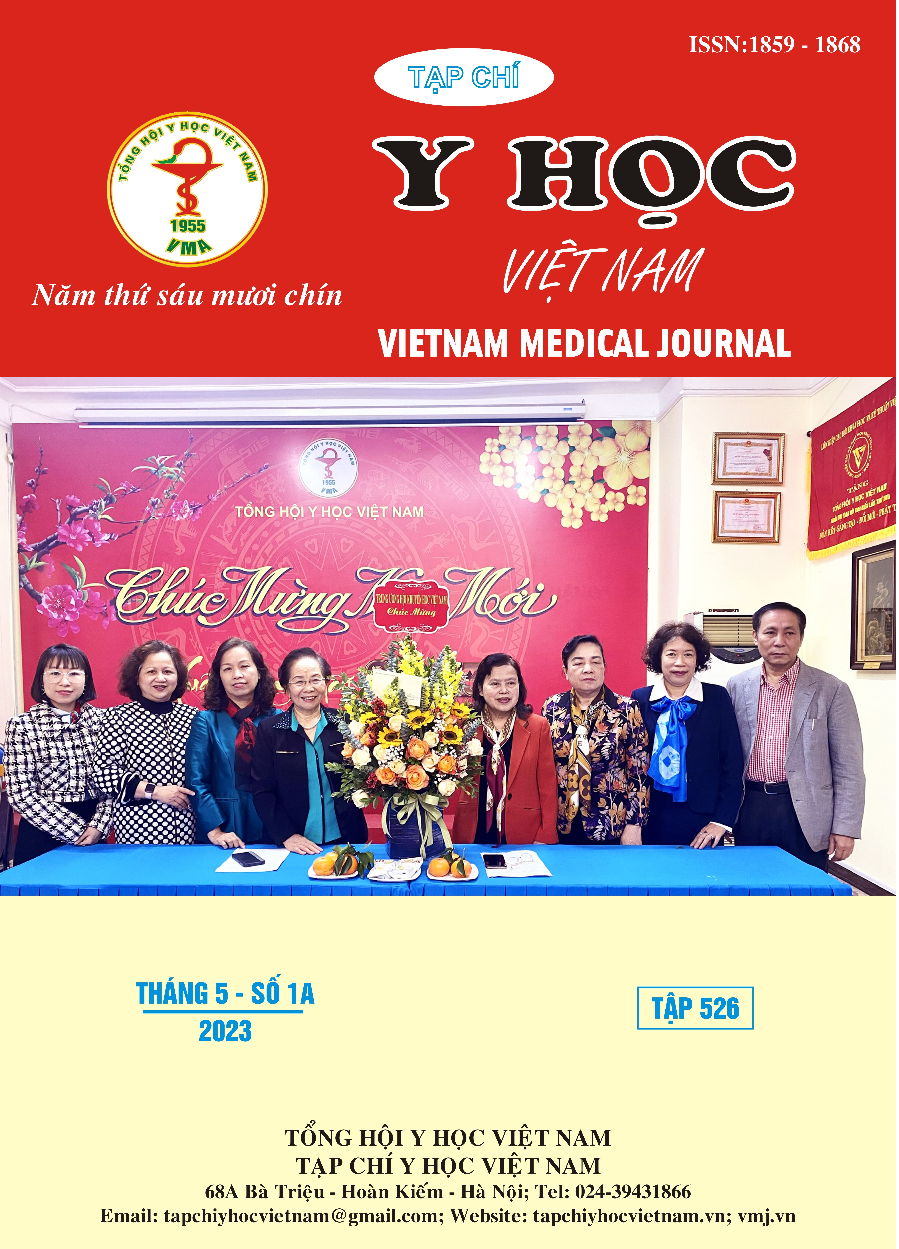ASSESSMENT OF THE CLINICAL EFFICACY OF ANTIBIOTIC THERAPY USING COLISTIN NEBULIZER IN THE TREATMENT OF VENTILATOR-RELATED PNEUMONIA
Main Article Content
Abstract
Objectives: To evaluate the clinical effectiveness of antibiotic therapy using nebulized Colistin compared with intravenous route in the treatment of ventilator-associated pneumonia caused by Gram(-) bacteria. Methods: Prospective study, clinical trial, randomized controlled group. 60 patients were divided into two groups by random drawing: Nebulized group (KD): use 2MUI colistin mixed in 10ml of sterile saline, nebulize every 6 hours for 30 minutes; Intravenous group (TM): use LD 9MUI colistin, then 2MUI mix 50ml of saline SE intravenously for 60 minutes x 6 hours/time. Collect data on clinical changes of the 2 study groups, process and compare by statistical methods. Results: The rate of patients had clinical response in group of patients using nebulized Colistin was 76.7% and the group of patients using intravenous Colistin was 70%. The rates of patients had clinical response on day 3, day 7 and day 10 of the nebulized route were 20%, 66.7% and 76.7%, respectively, with the intravenous group were 16.7%, 50% and 66.7%, respectively. The time patients had fever reduction of the nebulizer group was faster than that of the intravenous group: an average of 3 days in the KD group and 5 days in the TM group. Mortality was lower in the KD group than in the TM group (20% vs. 30%). Conclusion: Although the regimen using the Nebulized Colistin antibiotic had better clinical success than the intravenous route, the difference was not statistically significant.
Article Details
Keywords
Ventilator-associated pneumonia, Gr(-), Colistin, Nebulized, clinical efficacy
References
2. Markantonis S.L, Markou N, Fousteri M, et al (2009). “Penetration of Colistin into Cerebrospinal Fluid”. Antimicrob Agents Chemother, 53(11), 4907-10.
3. Qin Lu, MD, et al (2012). “Efficacy of High-Dose Nebulized Colistin in Ventilator-Associated Pneumonia Caused by Multidrug-Resistant Pseudomonas Aeruginosa and Acinetobacter Baumannii”. Anesthesiology December 2012, 117, 1335-1347.
4. Ji Young Jang, et al (2017), “Efficacy and Toxicity of High-Dose Nebulized Colistin for Critically Ill Surgical Patients with Ventilator-Associated Pneumonia Caused by Multidrug Resistant Acinetobacter Baumannii”. Journal of Critical Care, (40), 251-256.
5. MJ Perez-Pedrero, M Sanchez-Casado, S Rodriguez-Villar (2011). Nebulized Colistin Treament of Multi-Resistant Acinetobacter Baumannii Pulmonary Infection in Critical Ill Patients. Med Intensiva, 35(4), 266-31.
6. Nguyễn Bá Cường (2017). “Đánh Giá Hiệu Quả và Độc Tính Trên Thận Của Hai Chế Độ Liều Sử Dụng Colistin ở Bệnh Nhân Viêm Phổi Liên Quan Thở Máy”. Luận Văn Bác Sỹ Nội Trú. Đại Học Y Hà Nội.


